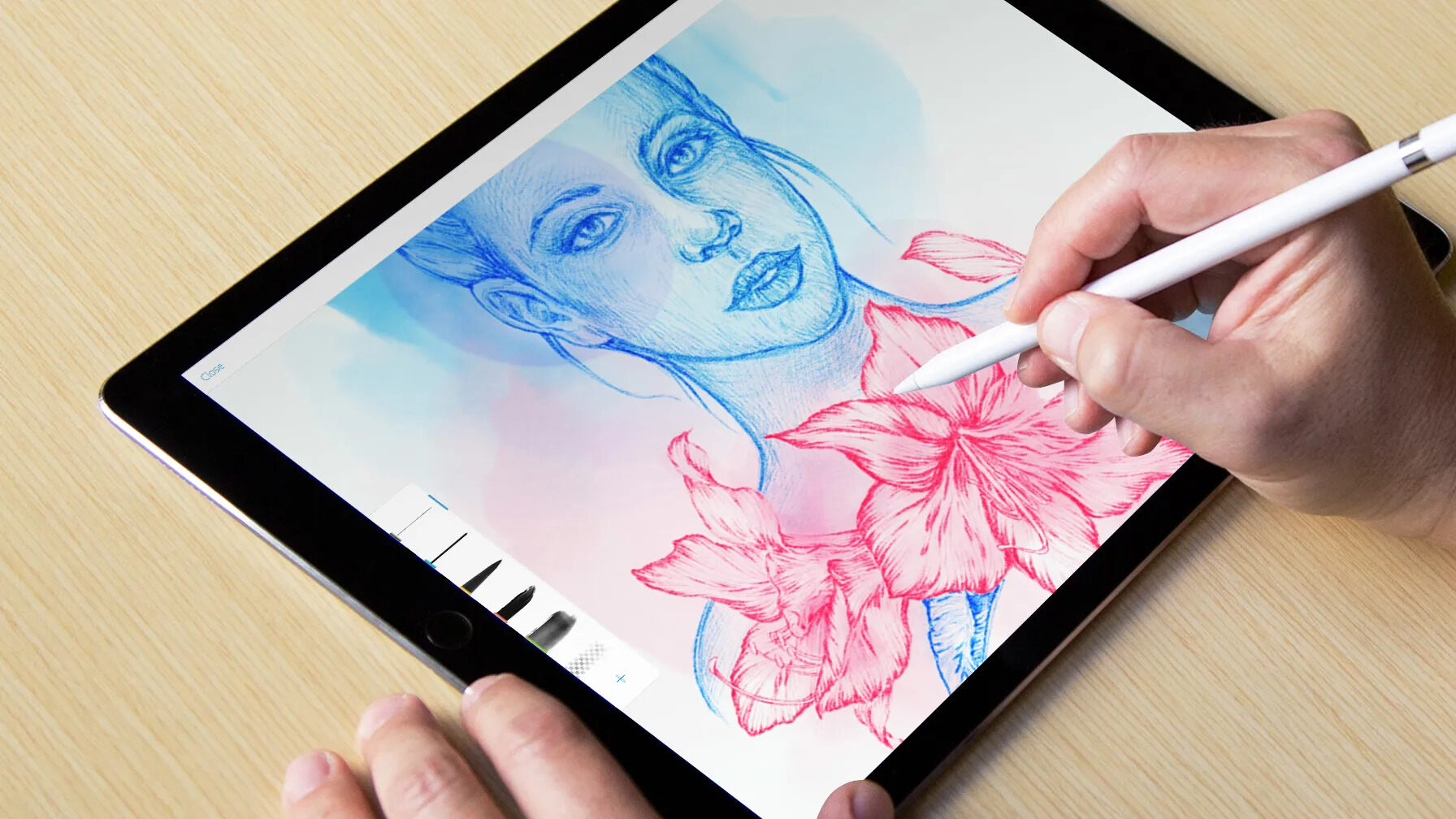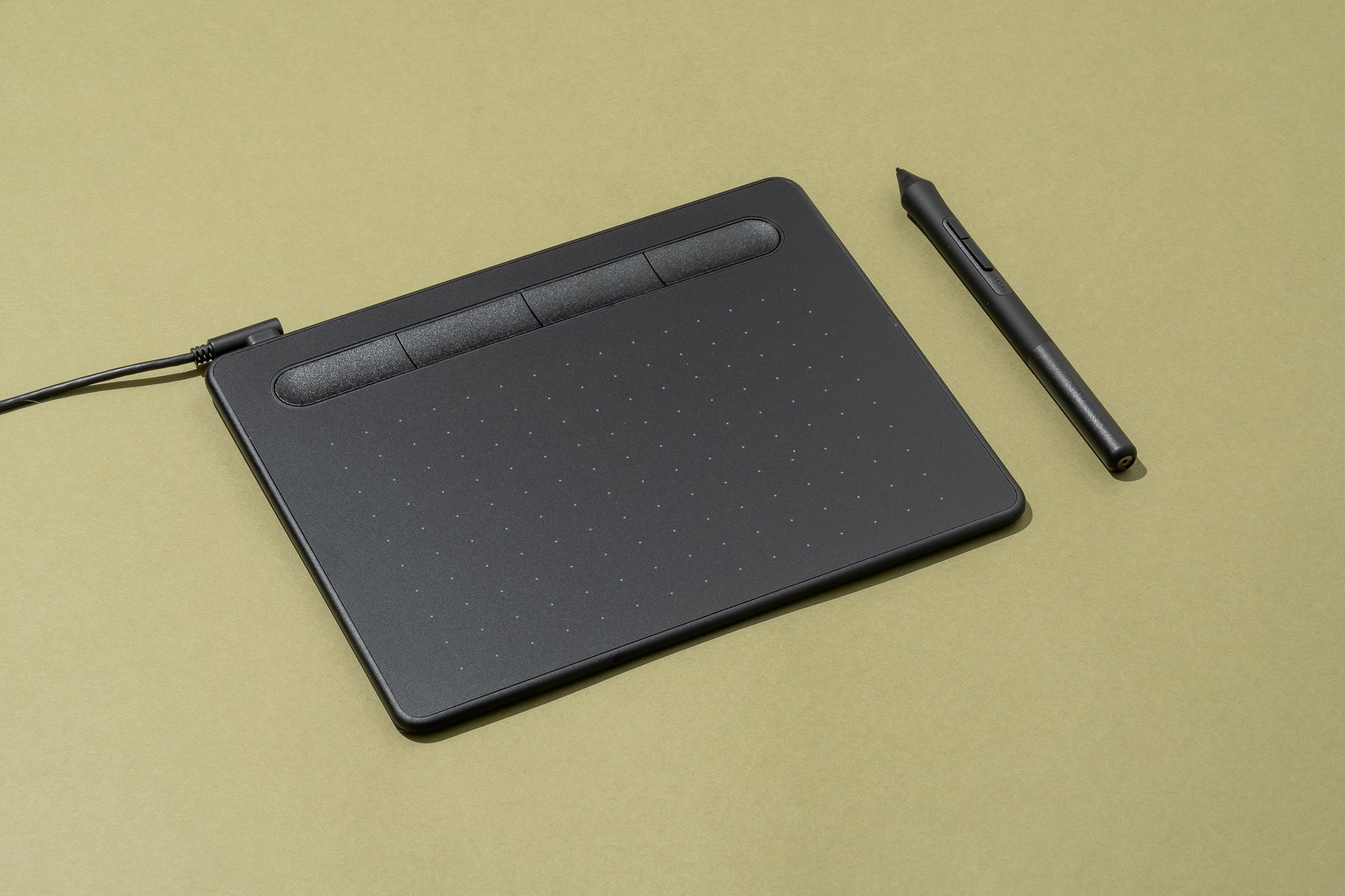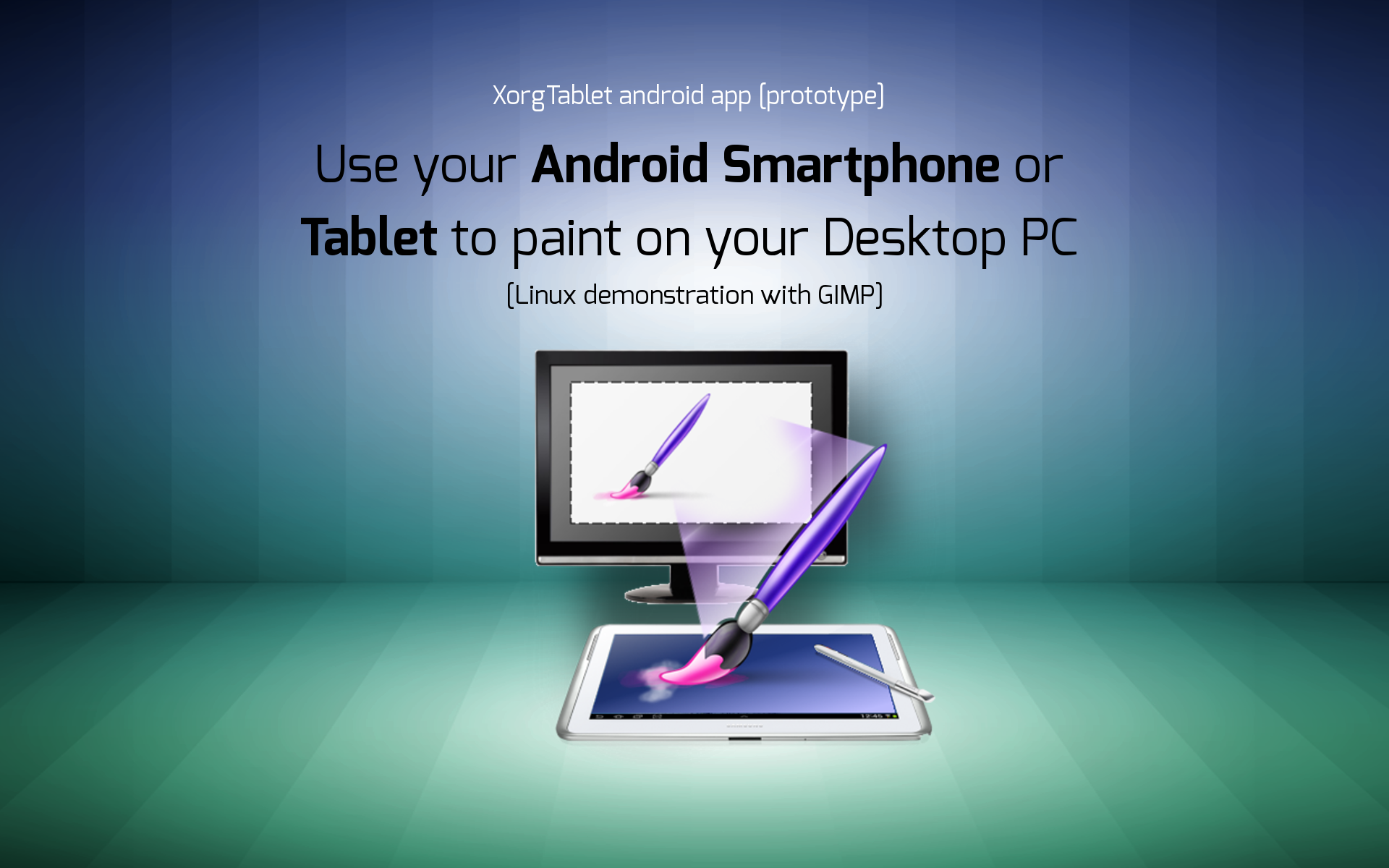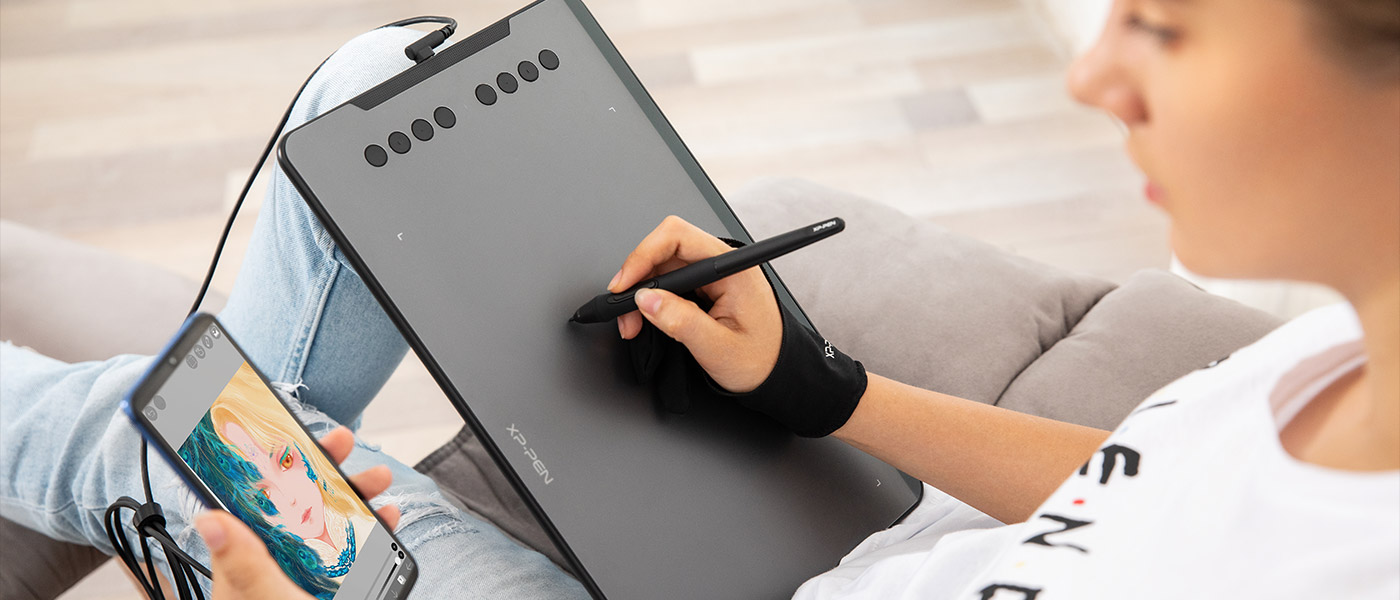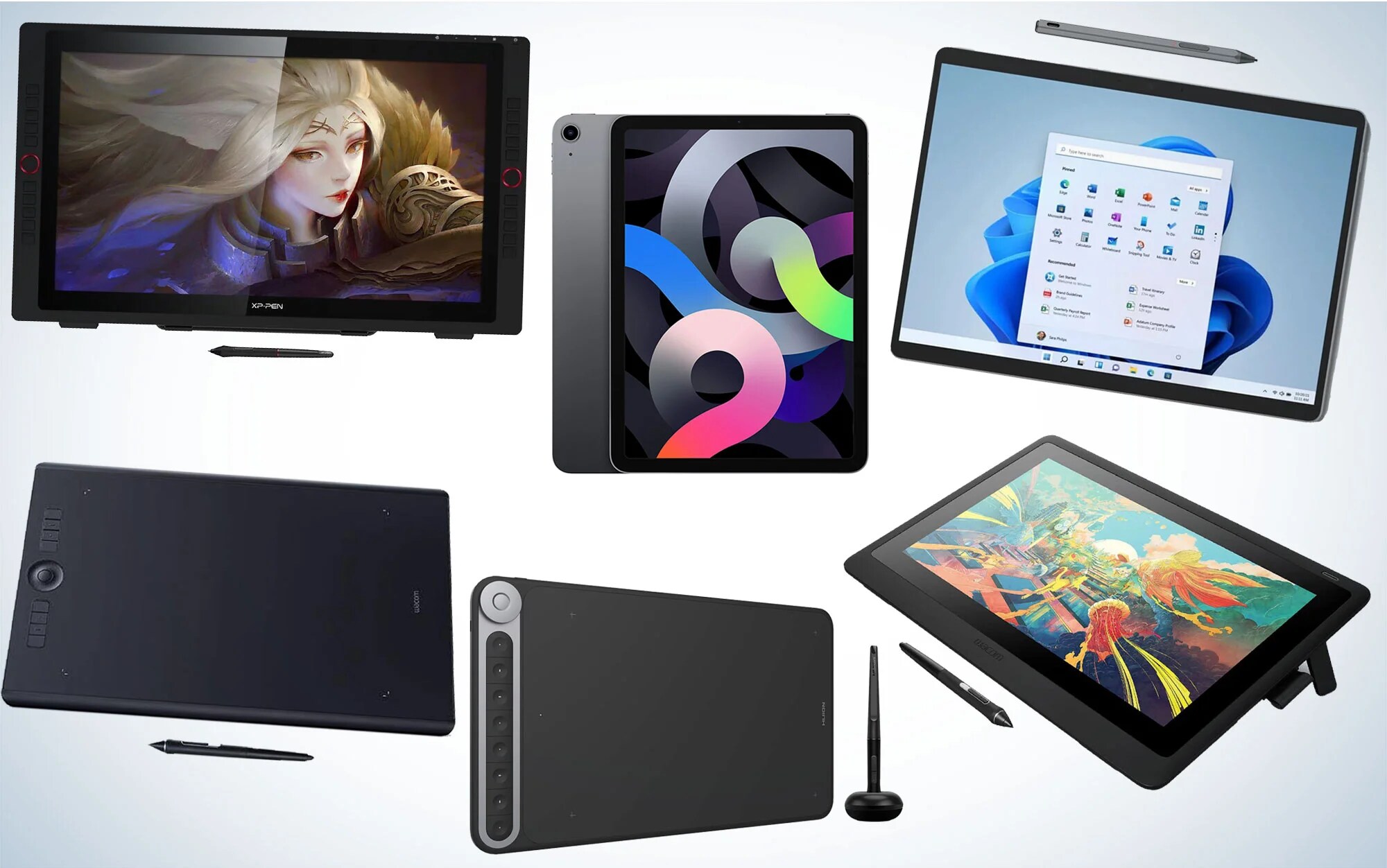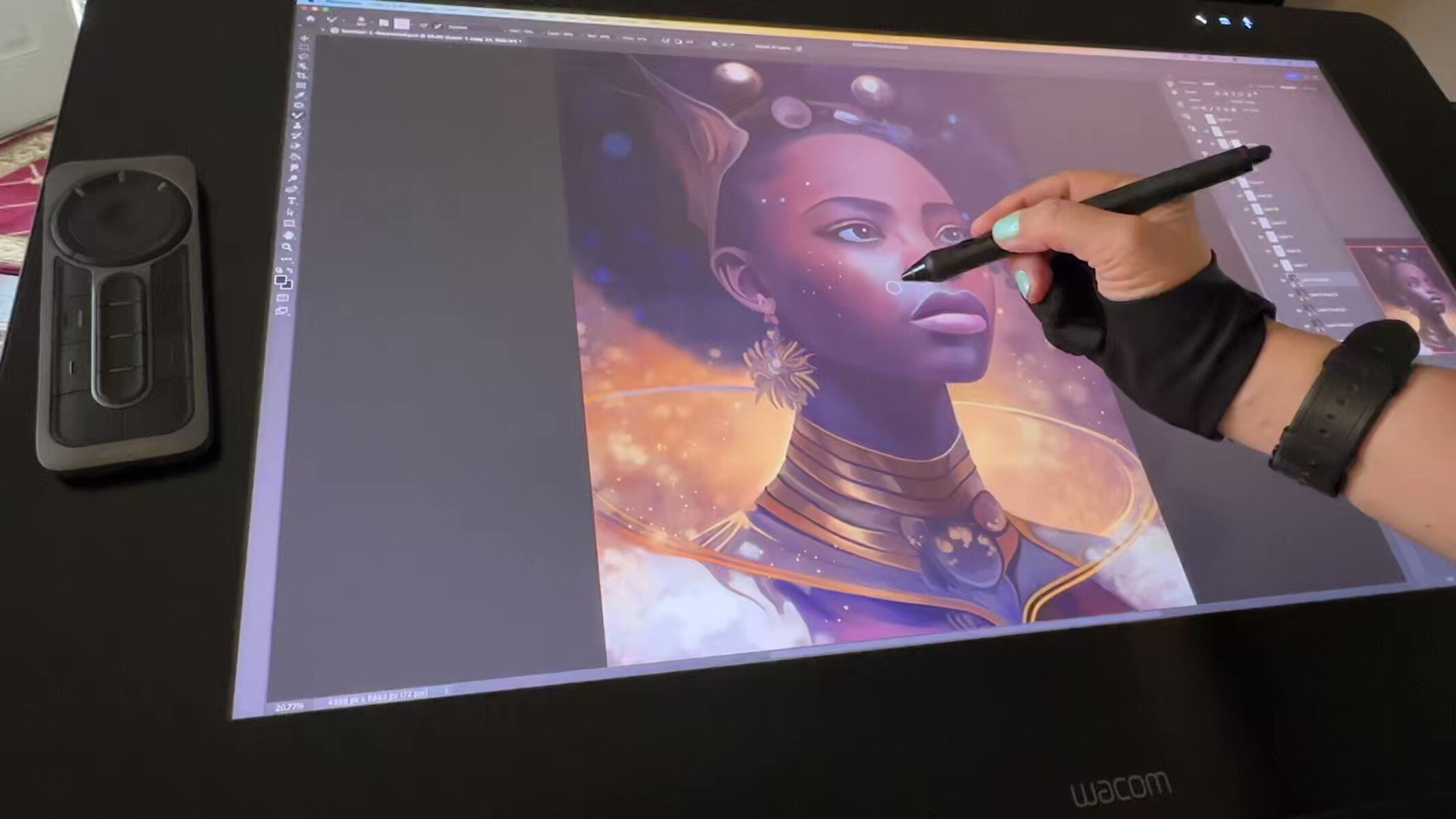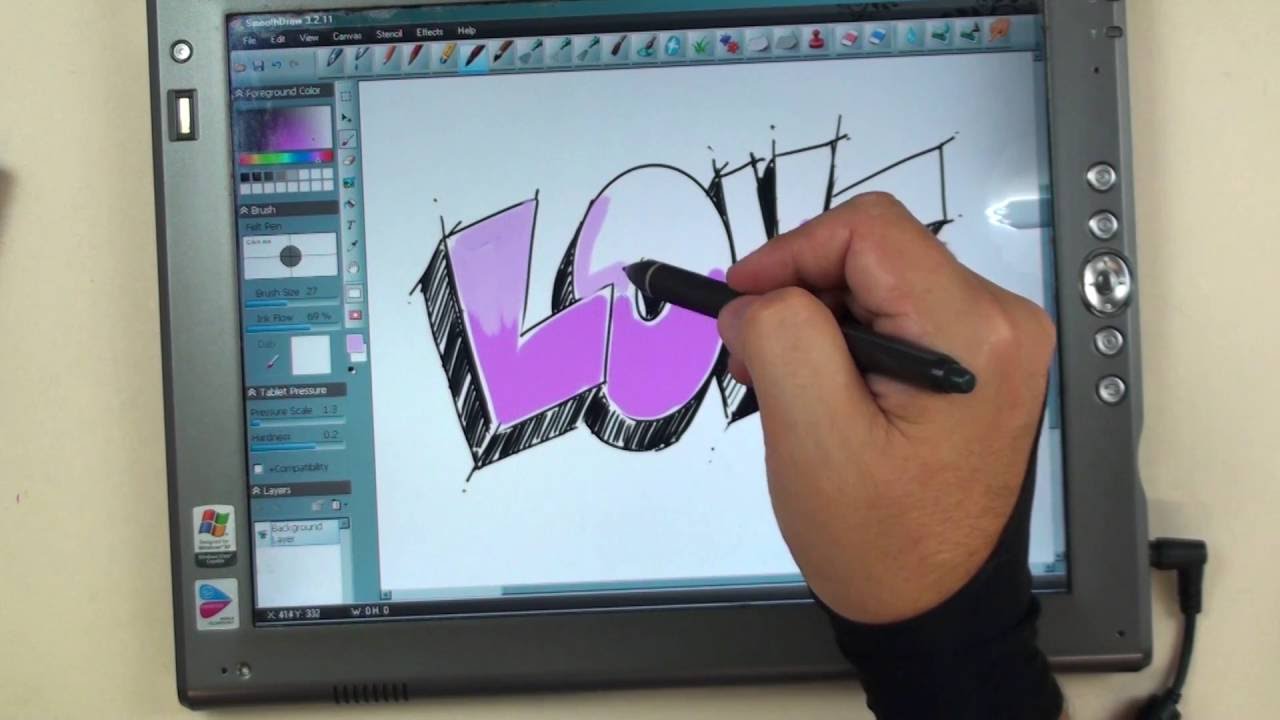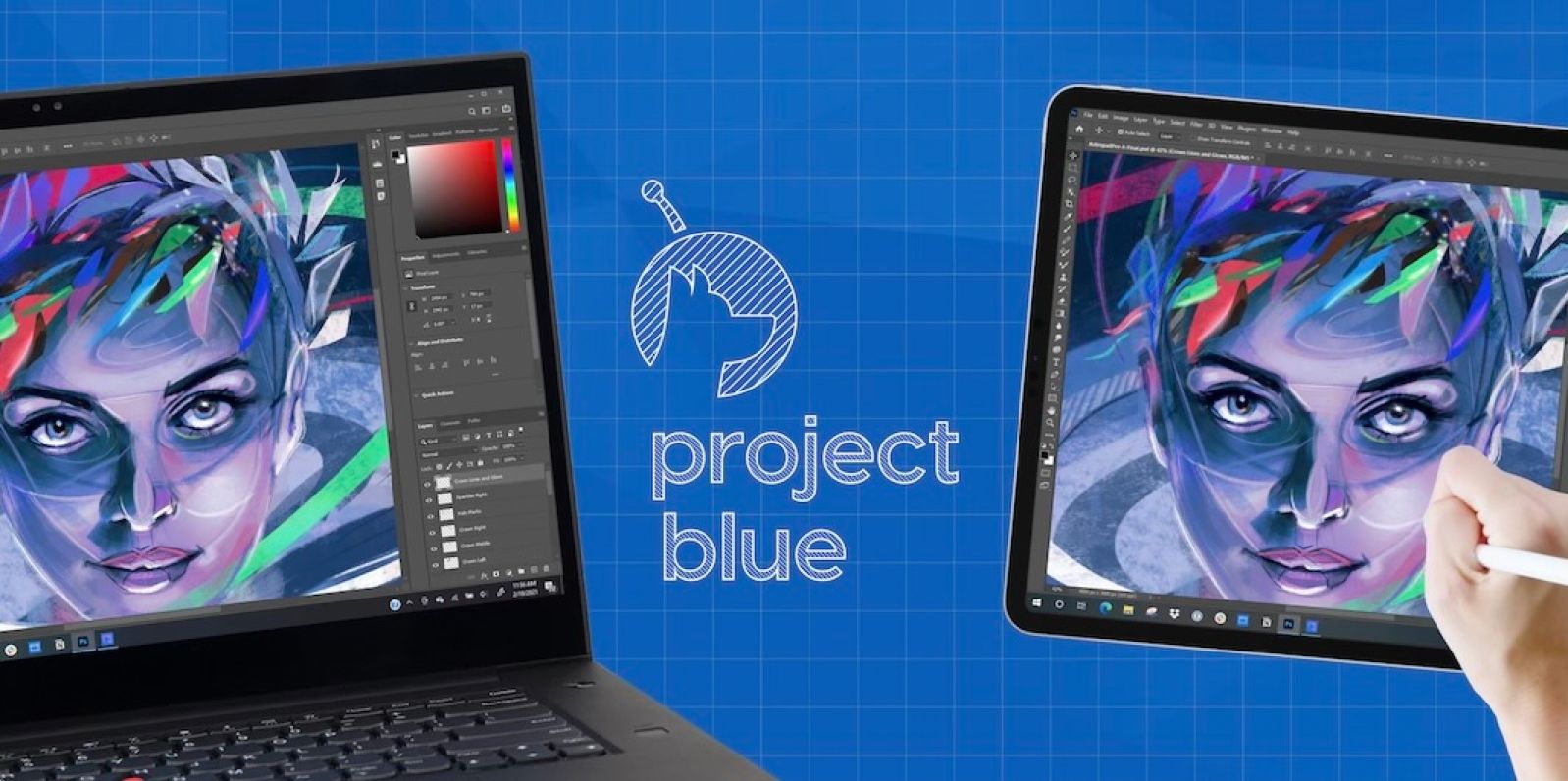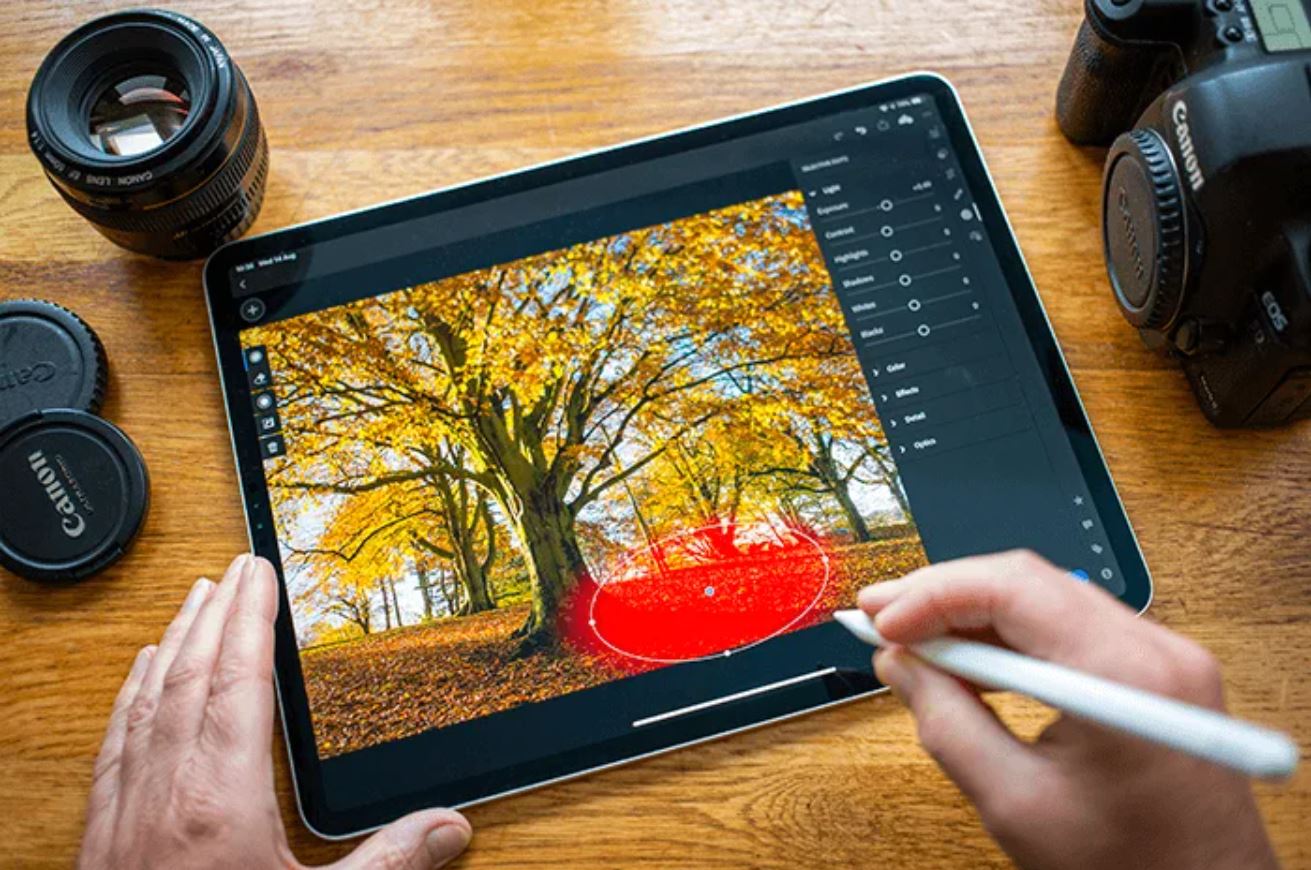Introduction
Choosing the right drawing tablet is a crucial decision for any artist, whether you are a beginner or a professional. With such a wide range of options available in the market, it can be overwhelming to determine which drawing tablet is best suited for your needs.
In this comprehensive guide, we will explore the factors you should consider when choosing a drawing tablet, the different types available, and the essential features to look for. Whether you intend to use a drawing tablet for digital art, graphic design, or even just as a tool for taking notes and annotating documents, our aim is to help you make an informed decision.
As an artist, your drawing tablet is your creative companion and an extension of your artistic expression. It is essential to find a device that matches your specific requirements, including your preferred drawing style, the software you use, and of course, your budget.
Throughout this article, we will discuss various aspects of drawing tablets, such as size and resolution, sensitivity and pressure levels, compatibility with different software, connectivity options, and additional features and accessories. By understanding these factors, you will be better equipped to select the perfect drawing tablet that suits your needs.
So, let us dive into the world of drawing tablets and help you embark on a journey of creativity and imagination!
Factors to Consider When Choosing a Drawing Tablet
When selecting a drawing tablet, there are several important factors to take into consideration. These factors will determine how well the tablet aligns with your artistic needs and preferences. Let’s explore these factors in detail:
1. Purpose: Consider your primary purpose for using the drawing tablet. Are you an illustrator, digital artist, or graphic designer? Knowing your intended use will help you narrow down the features you require.
2. Drawing Style: Different artists have different drawing styles, ranging from fine lines to bold strokes. Ensure that the tablet’s sensitivity and pressure levels can accurately capture and reproduce your desired drawing style.
3. Tablet Size: The size of the drawing tablet determines the available workspace. If you prefer larger strokes or need more precision, opt for a larger tablet. However, keep in mind that a larger tablet may be less portable.
4. Resolution: The tablet’s resolution affects the level of detail in your artwork. Higher resolution means more accuracy and sharper lines. Look for a tablet with a resolution that meets your specific requirements.
5. Sensitivity and Pressure Levels: Sensitivity determines how accurately the tablet can detect the pressure you apply. Higher sensitivity levels allow for more precise and nuanced strokes. Consider your drawing technique and opt for a tablet with appropriate sensitivity and pressure levels.
6. Compatibility: Ensure that the drawing tablet is compatible with your preferred software. Certain tablets may have limited compatibility or require additional configuration to work seamlessly with specific art programs.
7. Connectivity: Consider how you prefer to connect the tablet to your computer. The most common options are USB and wireless connectivity. Choose the one that best suits your workflow and convenience.
8. Additional Features and Accessories: Some drawing tablets come with built-in features such as customizable buttons, touch capabilities, or even screens for direct drawing. Assess whether these additional features align with your workflow and enhance your artistic experience.
9. Budget: Set a budget and consider the price range that suits your requirements. Determine the balance between the features you need and the investment you’re willing to make.
By considering these factors, you can make an informed decision when choosing the perfect drawing tablet that meets your specific artistic needs. Take your time, research thoroughly, and select a tablet that will become your creative companion on your artistic journey.
Different Types of Drawing Tablets
When it comes to drawing tablets, there are several different types available in the market. Each type caters to different needs and preferences. Let’s explore the most common types of drawing tablets:
1. Graphics Tablets: Graphics tablets, also known as pen tablets or drawing tablets, are the most common type available. These tablets consist of a flat surface on which you draw using a stylus or pen. The artwork appears on the computer screen as you draw on the tablet.
2. Display Tablets: Display tablets, also known as pen displays or interactive pen displays, are equipped with a screen on which you directly draw using a stylus. These tablets provide the experience of drawing directly on the screen, giving a more natural and intuitive feel.
3. Tablet Computers: Tablet computers offer a versatile solution for digital drawing, as they combine the functionality of a tablet and a computer. These devices typically have touch screens and stylus support, making them suitable for drawing and other tasks.
4. 2-in-1 Convertibles: 2-in-1 convertibles are laptops or tablet computers that can transform into a tablet-like device. They provide the flexibility of both a laptop and a tablet, making them ideal for artists who need a portable solution.
5. Mobile Devices: Mobile devices such as smartphones and tablets are increasingly popular for digital drawing. With the availability of drawing apps and styluses, these devices offer portability and convenience for artists on the go.
6. Graphic Tablets with Screens: These tablets have an integrated screen that displays your artwork as you draw. They provide a more tactile experience and eliminate the need for a separate monitor.
7. E-paper Tablets: E-paper tablets are designed to mimic the experience of drawing on paper. These tablets have a reflective surface, making them ideal for artists who prefer a traditional paper-like texture.
Each type of drawing tablet has its own advantages and considerations. Consider your drawing workflow, budget, mobility needs, and desired drawing experience to determine the most suitable type of tablet for you.
Now that we’ve explored the different types of drawing tablets available, you can begin to narrow down your options and decide which type aligns best with your artistic requirements.
Features to Look for in a Drawing Tablet
When choosing a drawing tablet, it is important to consider the features that will enhance your artistic experience and enable you to create your best work. Here are some key features to look for:
1. Pressure Sensitivity: The pressure sensitivity of a drawing tablet determines how effectively it can detect varying levels of pressure. Higher pressure sensitivity allows for more control and precision in creating different line weights and textures.
2. Pen Accuracy: The accuracy of the pen or stylus is crucial for achieving precise and natural-looking brushstrokes. Look for a tablet that offers high pen accuracy to ensure your artwork translates seamlessly from pen to digital canvas.
3. Drawing Surface Texture: Consider the texture of the tablet’s drawing surface. Some tablets have a smooth surface, while others mimic the feel of paper. The right texture can provide a more tactile and comfortable drawing experience.
4. Programmable Buttons: Tablets equipped with programmable buttons allow you to customize shortcuts for frequently used commands. These buttons can significantly streamline your workflow, saving time and increasing productivity.
5. Multi-Touch Gestures: Tablets that support multi-touch gestures, such as pinch-to-zoom or swipe gestures, offer added convenience and flexibility when navigating your artwork or zooming in for detailed work.
6. Tilt Sensitivity: Tilt sensitivity detects the angle at which you hold the pen and translates it into variations in line width and shading. This feature is especially useful for artists who prefer to work with natural and expressive brush strokes.
7. Compatibility: Ensure that the drawing tablet you choose is compatible with your preferred software. Different tablets have varying degrees of compatibility, and it is essential to confirm that your artwork creation software of choice works seamlessly with the tablet.
8. Display Resolution: If you opt for a tablet with a built-in display, consider its display resolution. A higher resolution will offer clearer, detailed images and visuals, enhancing your ability to create accurate and vibrant artwork.
9. Battery Life: For portable drawing tablets, battery life is a crucial consideration. Look for a tablet that offers a long battery life to keep you going during extended drawing sessions or when you’re on the move.
10. Ergonomics: Pay attention to the tablet’s ergonomic design to ensure it is comfortable to use for prolonged periods. Factors to consider include weight, grip, and the ability to adjust the tablet to your preferred angle.
By considering these features, you can select a drawing tablet that aligns with your artistic needs and preferences. Remember to prioritize the features that will enhance your workflow and enable you to unleash your creative potential.
Drawing Tablet Size and Resolution
When choosing a drawing tablet, two essential factors to consider are the tablet’s size and resolution. These factors significantly impact your drawing experience and the level of detail in your artwork. Let’s explore these factors in more detail:
1. Tablet Size: The size of a drawing tablet refers to the dimensions of the drawing surface. Larger tablets provide more space for creating broad strokes and intricate details. Artists who work on detailed projects or with sweeping motions may prefer a larger tablet for better control and accuracy. However, a larger tablet may be less portable and require more desk space.
On the other hand, smaller tablets are more compact and portable, making them suitable for artists who work on the go or have limited workspace. Smaller tablets are also often more affordable than their larger counterparts. Consider your drawing style, workspace, and portability requirements when choosing the size of your drawing tablet.
2. Resolution: The resolution of a drawing tablet refers to the number of pixels its display or surface can display. Higher resolution results in a more detailed, sharp, and accurate depiction of your artwork. With higher resolution, your lines will be crisper, and colors will appear more vibrant and true to life.
Resolution is especially crucial for artists who require precise details and work with intricate designs or illustrations. However, it is essential to balance the resolution with the performance capabilities of your computer. Higher resolutions may require more processing power, and your computer must be able to handle the increased demands.
Consider the level of detail you aim to achieve in your artwork and whether your computer can handle a higher resolution tablet. It’s also important to note that tablets with built-in displays often offer their own resolution specifications, which may differ from the resolution of the computer you connect them to.
By considering the size and resolution of a drawing tablet, you can find the optimal balance between workspace, portability, and image clarity. Choose a tablet size that suits your workflow and a resolution that allows you to express your creativity with precision and stunning visual impact.
Sensitivity and Pressure Levels
One of the crucial factors to consider when choosing a drawing tablet is the sensitivity and pressure levels it offers. These features determine how accurately the tablet can detect the pressure and nuances of your pen strokes. Let’s explore sensitivity and pressure levels in more detail:
1. Sensitivity: Sensitivity refers to the ability of the drawing tablet to detect and translate the pressure applied by the stylus into variations in line thickness. Tablets with higher sensitivity levels can capture even the slightest changes in pressure, allowing for more precise and natural-looking strokes. Artists who work with a wide range of line weights or require intricate detailing may benefit from a tablet with higher sensitivity.
2. Pressure Levels: Pressure levels represent the range of pressure that a drawing tablet can recognize. Tablets with higher pressure levels can detect a greater range of pressure, enabling artists to create artwork with more depth and dynamism. With higher pressure levels, you can easily create light, delicate strokes as well as bold, expressive lines. Consider your drawing style and technique to determine the appropriate pressure levels that will accommodate your artistic needs.
Both sensitivity and pressure levels play a significant role in creating a more natural and responsive drawing experience. They provide artists with more control and versatility, allowing for a broader range of artistic expression. By being able to precisely control line thickness and opacity, artists can create stunning artwork with depth, texture, and emotion.
It’s important to note that the sensitivity and pressure levels of a drawing tablet are often adjustable and can be customized according to your preferences. You can fine-tune these settings to match your drawing technique and desired artistic effects.
Before purchasing a drawing tablet, consider how important sensitivity and pressure levels are to your artistic process. If you prioritize precise control and detail, look for a tablet with higher sensitivity and pressure levels. However, it’s essential to balance these features with other factors such as budget and compatibility with your preferred software.
Ultimately, the sensitivity and pressure levels of a drawing tablet can significantly enhance your creative workflow and unlock new levels of artistic expression. Choose a tablet that offers the right balance of sensitivity and pressure levels to empower you as an artist and bring your imagination to life.
Compatibility with Different Softwares
When choosing a drawing tablet, it is essential to consider its compatibility with the software you intend to use for your artistic projects. Not all drawing tablets work seamlessly with every software, so let’s explore the importance of compatibility in more detail:
1. Artistic Software: Think about the specific drawing or artistic software you primarily use or plan to use with the drawing tablet. Ensure that the tablet you choose is compatible with that software. Some popular software options for digital art include Adobe Photoshop, Corel Painter, Autodesk Sketchbook, and Clip Studio Paint. Check the drawing tablet manufacturer’s website or specifications to confirm compatibility with your preferred software.
2. Operating System: Consider the operating system (OS) of your computer or device and whether the drawing tablet is compatible with it. Most tablets support popular operating systems such as Windows, macOS, and sometimes Linux. However, it’s essential to verify compatibility to ensure a smooth and error-free experience.
3. Drivers and Firmware: Drawing tablets often require specific drivers or firmware to establish a connection and enable functionality with your computer. Ensure that the tablet manufacturer provides reliable driver support for your operating system. Outdated or unsupported drivers can cause compatibility issues or hinder the tablet’s performance with your software.
4. Plug-and-Play Compatibility: Some drawing tablets offer plug-and-play compatibility, meaning they can be used without installing any additional drivers or software. This convenience can save you time and hassle. However, even with plug-and-play compatibility, it’s crucial to ensure the tablet is still compatible with your preferred software for a seamless artistic experience.
5. Software-Specific Features: Certain drawing tablets may offer software-specific features or integration. For example, they might have customized shortcuts for specific software tools or support for unique features within the software. Research and check if the tablet offers any additional features or benefits when used with your preferred software.
6. Updates and Support: Consider the tablet manufacturer’s track record for providing software updates and ongoing support. Regular updates can improve compatibility with new software versions and ensure a smooth user experience. Reliable customer support can also help address any compatibility issues or technical difficulties that may arise.
By considering the compatibility of a drawing tablet with different software, you can ensure a seamless workflow and maximize the potential of your artistic tools. Verify compatibility with your preferred software and operating system to guarantee a hassle-free and productive creative experience.
Connectivity Options for Drawing Tablets
When selecting a drawing tablet, it is important to consider the connectivity options it offers. The connectivity of the tablet determines how it connects to your computer or device, influencing factors such as ease of use, portability, and compatibility. Let’s explore the different connectivity options available for drawing tablets:
1. USB: USB connectivity is a popular and widely supported option for drawing tablets. Most tablets come with a USB cable that connects the tablet directly to your computer. USB connectivity ensures a reliable and stable connection, allowing you to seamlessly transfer your pen strokes to your digital canvas. Additionally, USB cables can also provide power to the tablet, eliminating the need for separate power sources.
2. Wireless: Wireless connectivity offers greater flexibility and freedom of movement. Drawing tablets with wireless capabilities use technologies such as Bluetooth or Wi-Fi to connect to your computer or device. Wireless tablets eliminate the need for cables, providing a more comfortable and clutter-free drawing experience. However, it is important to ensure that your computer or device also supports the wireless technology used by the tablet.
3. Bluetooth: Drawing tablets with Bluetooth connectivity offer the convenience of wireless communication with your computer or device. Bluetooth allows for a stable and secure connection without the need for cables. Keep in mind that while Bluetooth is handy for wireless connectivity, it may have a slight lag compared to a wired connection, which can be a factor to consider for artists who require real-time responsiveness.
4. Wi-Fi: Wi-Fi connectivity allows the drawing tablet to connect to your computer or device via a wireless network. This option offers the freedom to work from a distance, as long as the tablet and the computer are connected to the same Wi-Fi network. Wi-Fi connectivity can be beneficial for artists who prefer to work in a more relaxed and flexible setting without the constraint of physical cables.
5. Additional Connectivity Options: Some drawing tablets may offer additional connectivity options, such as USB-C or HDMI ports. USB-C enables faster data transfer and can also provide power to the tablet. HDMI ports allow you to connect the tablet directly to a monitor, providing a secondary screen for your digital workspace.
Consider your specific needs and preferences when selecting the connectivity option for your drawing tablet. USB connectivity is typically reliable and compatible with most devices, making it a popular choice. Wireless options provide greater flexibility but may have slight latency or require specific device compatibility. Assess how important portability, convenience, and real-time responsiveness are to your artistic workflow to make an informed decision.
By choosing the right connectivity option, you can establish a seamless connection between your drawing tablet and your computer or device, ensuring a smooth and efficient artistic experience.
Additional Accessories and Features
When selecting a drawing tablet, it’s worth considering the additional accessories and features that can enhance your artistic experience. These accessories and features can improve functionality, comfort, and convenience. Let’s explore some of the options available:
1. Stylus Holder: Many drawing tablets come with a stylus holder or a built-in storage slot to keep your stylus secure when not in use. This accessory ensures that your stylus is always within reach, preventing loss or damage.
2. Adjustable Stand: An adjustable stand can provide better ergonomics by allowing you to position the drawing tablet at a comfortable angle for your drawing sessions. It reduces strain and improves posture, enhancing your overall drawing experience.
3. Glove or Hand Rest: A drawing glove or hand rest can reduce friction and smudging while drawing, keeping your work clean and free from unintended marks. These accessories create a smooth surface for your hand to glide comfortably over the tablet, improving precision and control.
4. Shortcut Buttons: Some tablets offer customizable shortcut buttons on the surface or pen/stylus. These buttons can be programmed to execute specific commands or shortcuts within your drawing software. They allow for quick access to frequently used tools, enhancing workflow efficiency.
5. Multi-Touch Support: Drawing tablets with multi-touch support allow you to use gestures such as pinch-to-zoom or swipe for navigation and manipulation of your artwork. This feature can streamline your workflow and increase productivity.
6. Screen Protection: Screen protectors are thin films or tempered glass covers that provide an extra layer of protection for the drawing tablet’s screen. They shield the screen from scratches, smudges, and dirt, keeping the display pristine and prolonging its lifespan.
7. Customizable Pen Nibs: Some drawing tablets come with interchangeable pen nibs of different materials or textures. These nibs offer versatility in terms of line thickness, surface feel, and durability, allowing you to customize your drawing experience to suit your preferences.
8. Tilt Support: Tablets with tilt support can detect the angle at which you hold the pen or stylus and translate it into variations in line width and shading. This feature adds another dimension of control and realism to your drawings.
9. Integration with Cloud Storage: Certain tablets offer seamless integration with cloud storage services, allowing you to save and access your artwork directly from the cloud. This feature ensures that your work is safely stored, easily accessible, and can be shared across multiple devices or with collaborators.
Consider which accessories and features are important to you and your artistic workflow. Prioritize those that will enhance your comfort, efficiency, and artistic expression. You may also want to factor in your budget and determine which accessories or features are essential versus optional additions.
By selecting the right accessories and taking advantage of valuable features, you can optimize your drawing tablet’s capabilities and elevate your artistic creations.
Budget Considerations When Buying a Drawing Tablet
When it comes to purchasing a drawing tablet, budget considerations play a significant role in the decision-making process. Setting a budget helps you narrow down your options and find a tablet that meets your artistic needs without breaking the bank. Here are some factors to consider when budgeting for a drawing tablet:
1. Purpose and Skill Level: Determine your purpose for buying a drawing tablet and your skill level as an artist. If you’re a beginner or just starting out, you may not need the most advanced or expensive tablet. Assess how important various features and specifications are to your current artistic needs and carefully consider whether investing in higher-end models is necessary.
2. Tablet Type: Different types of drawing tablets vary in price. Graphics tablets or tablet computers with drawing functionality are often more budget-friendly compared to display tablets or high-end models with built-in screens. Consider the features and functionality you require and weigh them against the cost to find the right balance for your budget.
3. Brand Reputation and Reliability: Established brands tend to have a higher price tag due to their reputation and reliability. However, they also often offer better quality, durability, and customer support. Assess your budget and determine how much importance you place on brand reputation versus cost.
4. Size and Features: Larger tablets with more advanced features typically come at a higher price point. As mentioned earlier, assess your artistic needs and prioritize the size and features that are essential for your work. If portability is not a priority, opting for a smaller tablet can be more cost-effective.
5. Compatibility: Consider the compatibility of the tablet with your preferred software and operating system. Some tablets may require additional purchases or subscriptions to fully utilize their features or unlock specific software compatibility. Factor in any additional costs that may arise to ensure they fit within your budget.
6. Warranty and Support: When purchasing a drawing tablet, it’s advisable to choose a model that includes a warranty and reliable customer support. This can provide peace of mind and save you from additional expenses if the tablet requires repairs or replacements within the warranty period.
It’s important to strike a balance between your budget and the features and quality you desire in a drawing tablet. While it’s tempting to opt for the most advanced and expensive models, remember that even budget-friendly tablets can offer excellent functionality and meet your artistic needs.
Consider your budget constraints, prioritize the features that are most important to you, and conduct thorough research before making a final decision. Reading reviews, comparing specifications, and seeking recommendations can help you find a drawing tablet that offers the best value for your budget.
Remember that your artistic skills and creativity matter more than the price tag of your drawing tablet. With practice and dedication, you can create exceptional artwork regardless of the budget-friendly tablet you choose.
Conclusion
Choosing the right drawing tablet is a crucial decision that can significantly impact your artistic journey. By considering factors such as purpose, drawing style, tablet size, resolution, sensitivity, compatibility, connectivity options, additional accessories, and budget, you can make an informed decision that aligns with your artistic needs and preferences.
Take the time to research and compare different models, read reviews, and seek recommendations from fellow artists. Determine the features that are most important to you and prioritize them based on your artistic goals and workflow.
Remember that the perfect drawing tablet is the one that suits your individual needs and allows your artistic expression to flourish. Whether you are a beginner exploring digital art for the first time or a seasoned professional honing your skills, the right drawing tablet can be your trusted companion on your creative journey.
Investing in a drawing tablet opens up a world of possibilities, allowing you to experiment, innovate, and bring your ideas to life in ways that traditional mediums cannot match. Embrace the technology and versatility that a drawing tablet offers, and let your imagination soar.
Now that you are equipped with the knowledge and understanding of the various factors to consider when choosing a drawing tablet, it’s time to explore the market, find the model that resonates with you, and unleash your artistic potential.







